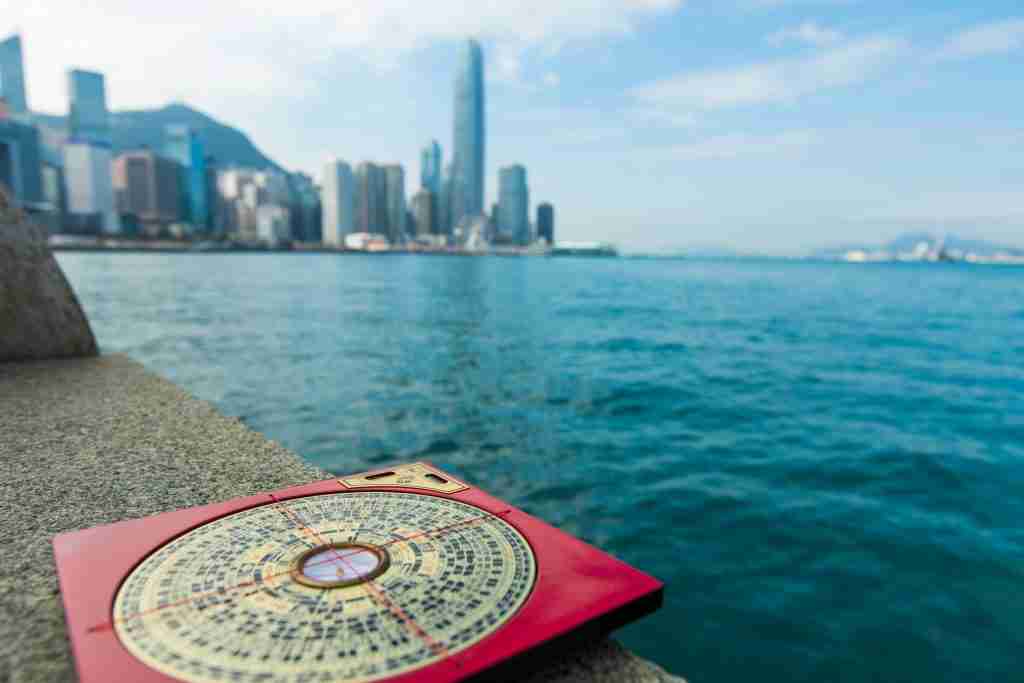Feng shui author and teacher Lillian Too explains that Feng shui literally means ‘wind and water’ and goes back at least to the fourth century BC and has its origins in the I Ching. It can be interpreted as ‘auspicious heavenly influence, beneficial topography, harmonious human actions’ – or, more simply, ‘living in harmony with the elements of nature’.
‘The Chinese believe there are two opposing yet complementary energies, yin and yang, that shape the universe and everything in it. Together yin and yang constitute a balanced whole known as Tao – or ‘the Way’. Auspicious feng shui can only be created when there is balance and harmony between yin and yang.’
The prosperity of Hong Kong, Singapore, Taiwan and Kuala Lumpur in Malaysia are attributed to auspicious feng shui practised in those countries. During Mao Zedong’s cultural revolution, all ancient Chinese practices, including feng shui, were forbidden, but today the people of Mainland China are turning once again to these beneficial practices.
According to Chinese tradition, humankind has three types of luck: heaven, earth and human luck. Balance these and, so the ancient sages say, we can enjoy enormous good fortune. Heaven luck is beyond our control, determining whether we are born rich or poor, destined for greatness or success, or fated to suffer tragedies and misfortunes. Earth luck is within our control if we live in balance with the natural forces of the environment – and here feng shui has great influence. Human luck depends on the effort and expertise we are willing to put into anything we do in life.
‘Good luck comes in many guises: Wealth, fame and promotion to positions of power, status and authority; marital harmony, loving and respectful children and good relationships generally; good health and longevity.’
Anyone who has worked with the I Ching will be familiar with the feng shui principles and symbols. The two basic principles are the concept of the cosmic breath or chi, symbolised by the dragon; and the five elements (earth, wood, metal, water and fire) and their relationships.
Some of the most important symbols are the Pa Kua, the eight trigrams of the I Ching and Lo Shu magic square. ‘These principles and symbols permeate all feng shui practice, irrespective of which school is being followed. They are fundamental to understanding the Chinese view of the universe and the forces that affect human destiny. Much of feng shui practice is based on the earth’s gravitational and magnetic fields.’
The Pa Kua is an eight-sided symbol based on and used in conjunction with the trigrams and hexagrams of the I Ching.
The Lo Shu or magic square is made up of nine numbers which total fifteen no matter in what direction they are added. ‘The ancient Chinese believed that the universe was based on mathematical principles.’ Numbers were seen as ‘the key to the invisible forces that govern both heaven and earth.’
Although feng shui is considered an art, she regards it as an oriental science ‘insofar it is a model of the world that allows those who use it to make certain predictions and achieve certain goals based on precise formulae’.
Extracted from The Complete Guide to Feng Shui by Lillian Too – Lillian Too’s book, The Complete Illustrated Guide to Feng Shui, is a distillation of over two decades of study, practice and personal experimentation. Excerpt Article Odyssey February/March 2000


